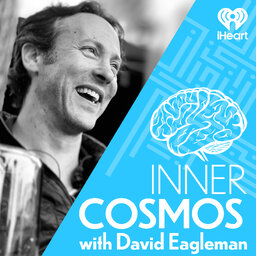Ep17 "What is consciousness?"
How do your billions of tiny brain cells build consciousness as they chatter away with electrical spikes and chemical signals? And why is your laptop, with its sophisticated algorithms and billions of parts, presumably not conscious? Could other large systems like a city become conscious? And what does this have to do with ant hills, blue birds, or your memory of your first kiss? Join Eagleman on a journey into one of the central mysteries of neuroscience: why we have awareness.
 Inner Cosmos with David Eagleman
Inner Cosmos with David Eagleman


